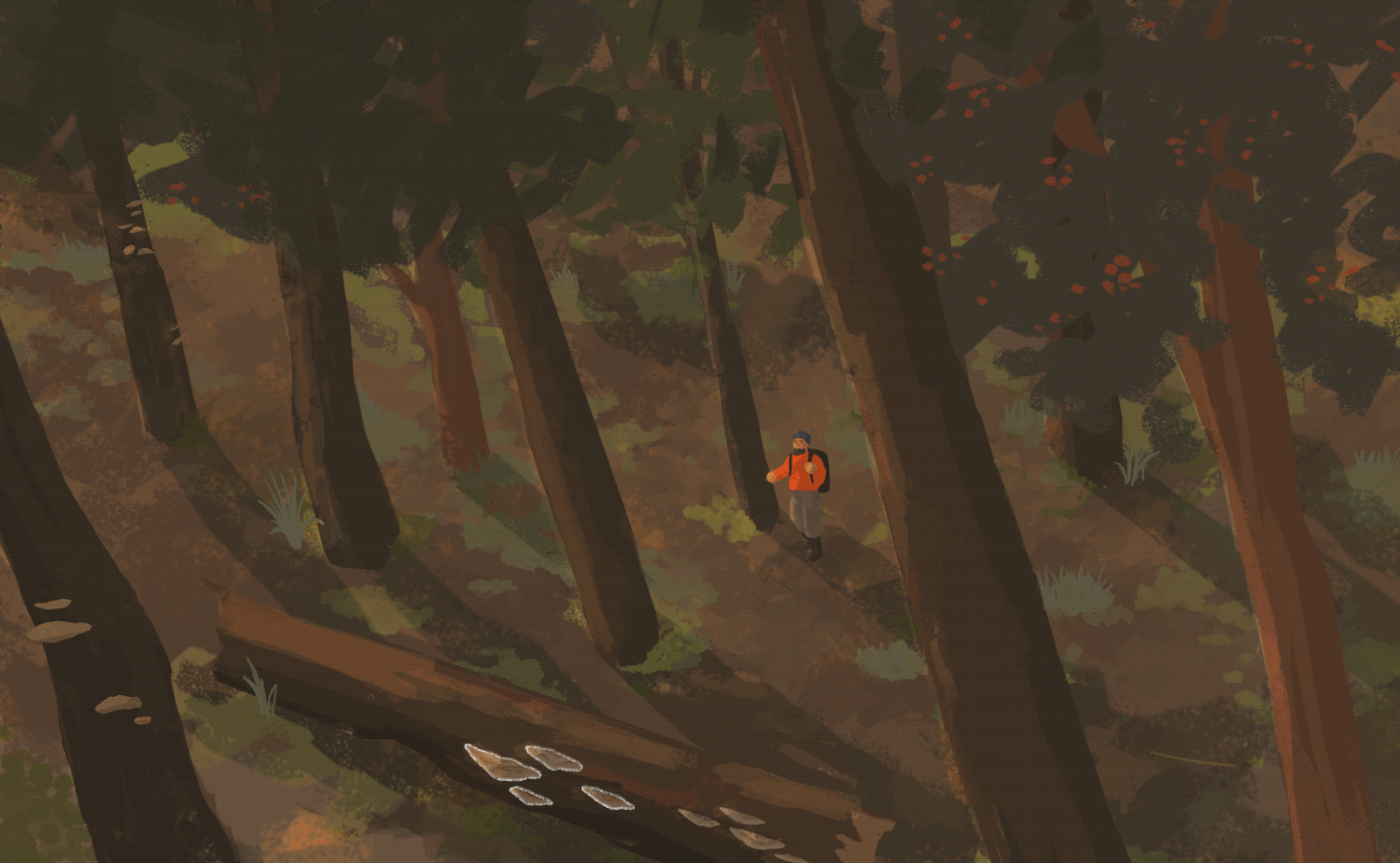
The
Impact
of
Climate Change
EMILY WHANG / NEXTGENRADIO
Kimia Akbari speaks with Tony Alvarez, an avid Bay Area-based forager, founder and community leader of Shroomy Walkabouts. Alvarez leads the community in early morning hikes while sharing his knowledge of edible and medicinal plants. Throughout his twelve years of foraging, Alvarez has seen first-hand how climate change has affected natural life around the Bay Area. A combination of increasing heat and decreasing rainfall has complicated his foraging ventures, shortening the window for mushroom foraging and, sometimes, forcing him to go out of the state to find the same bounty he previously saw at home.
Asking the forest for permission: Forager sees impact of climate change on California mushrooms
Bay Area mushroom forager reacts to changing climate
Click here for audio transcript
Hello, I’m Kimia Akbari with NPR’s NextGenRadio in Sacramento.
Tony Alvarez is an avid forager of mushrooms in the bay area.
He has seen the impact of a changing climate on the ecology and availability of mushrooms…
And he’s had to adjust.
Foraging is a way for him to connect with indigenous practices of land stewardship.
He shares these practices with the community by leading foraging hikes across the west coast.
TONY ALVAREZ: I sage every single person before we walk into the forest, I ask permission to the forest because we don’t own these places. We are just passing through. So we need to show a certain amount of respect. And then we get blessed in that way.
My name is Tony Alvarez. I am from the South Bay of the San Francisco Bay Area, San Jose area, and I am an avid forager and purveyor of the woods. I love the woods. This is Tilden Park in Oakland, California Hills, actually, Berkeley. And we are just looking for some some easily findable edibles at this point. Different plants and medicinal herbs and and mushrooms is the yeah. Is the star of the show.
So we stopped right here because this is the Bay leaf. This is the Bay Laurel. Smell that?
So climate change has changed a lot of different areas around the Bay Area very dramatically. Areas that were moist for six months out of the year were maybe getting three months. And it’s very sporadic. It’s not like it’s three weeks of full saturation. It’s like a day or two here and then just a month of nothing and then a couple of days and then nothing.
So it really has thrown the mycology world, or at least the ecology of the forest in kind of a tailspin.
To supplement, I’ve had to go north, way north, like Mendocino, Arcada, Oregon, Washington, to find the things that I would normally find in the Bay Area before I would say the last three or four years.
Recently, California has had quite a few natural fires, quote unquote. Well, I use that term very loosely, and I feel that the ash content that has been blanketing these forests has created almost super blooms of specific mushrooms.
And when the moisture comes in, it saturates the dirt, ash gets into the grooves, and then it starts to create that mycelial mat, and then it starts to produce fruit.
So you get a big flush of a certain mushroom. But as far as expecting that to be a reoccurring thing, that’s just not happening because of back to the water factor. Right? So we’re getting these gifts by way of ash content. But if there’s not enough water, it’s very limited.
The changes are really dramatic when you look at specific mushrooms and have grown on specific logs.
For years these mycelial mats will live on a log anywhere from 5 to 20 years. I mean, they never die. So when you’ve been seeing this log getting broken down over years and putting out mushrooms every single year around a certain time and then just not seeing it at all for an entire year, it puts everything into perspective on how quickly the climate is changing and what kind of repercussions it’s having on everything around.
During the walkabouts, we we tend to walk pretty slow because there’s a saying that I use in the walkabout is it’s all about the angle. It’s about the angle because we can be walking slowly one way and and come back, walk one way, slowly, not see anything, come back and see something in the exact area we thought we looked over. It’s like there was nothing here a second ago. And here’s this mushroom. It’s about angles. And that’s a that’s a metaphor for life.
You know we make things better than when we came in. We leave it better than when we came in. You know, so that’s part of land management. So I feel that that is going to been a key component for the growth of the movement of foraging.
And just as far as humans elevating to a higher understanding of our connection with the forest.
########
Tony Alvarez holds a light to a bundle of sage, burning the dried herbs and releasing a tart and smoky scent into the open air. He does this to cleanse the city energy before entering the forest and for permission to forage. In doing so, Alvarez pays homage to Indigenous communities who are the original stewards of the land — in particular, the Muwekma Ohlone’s territory.
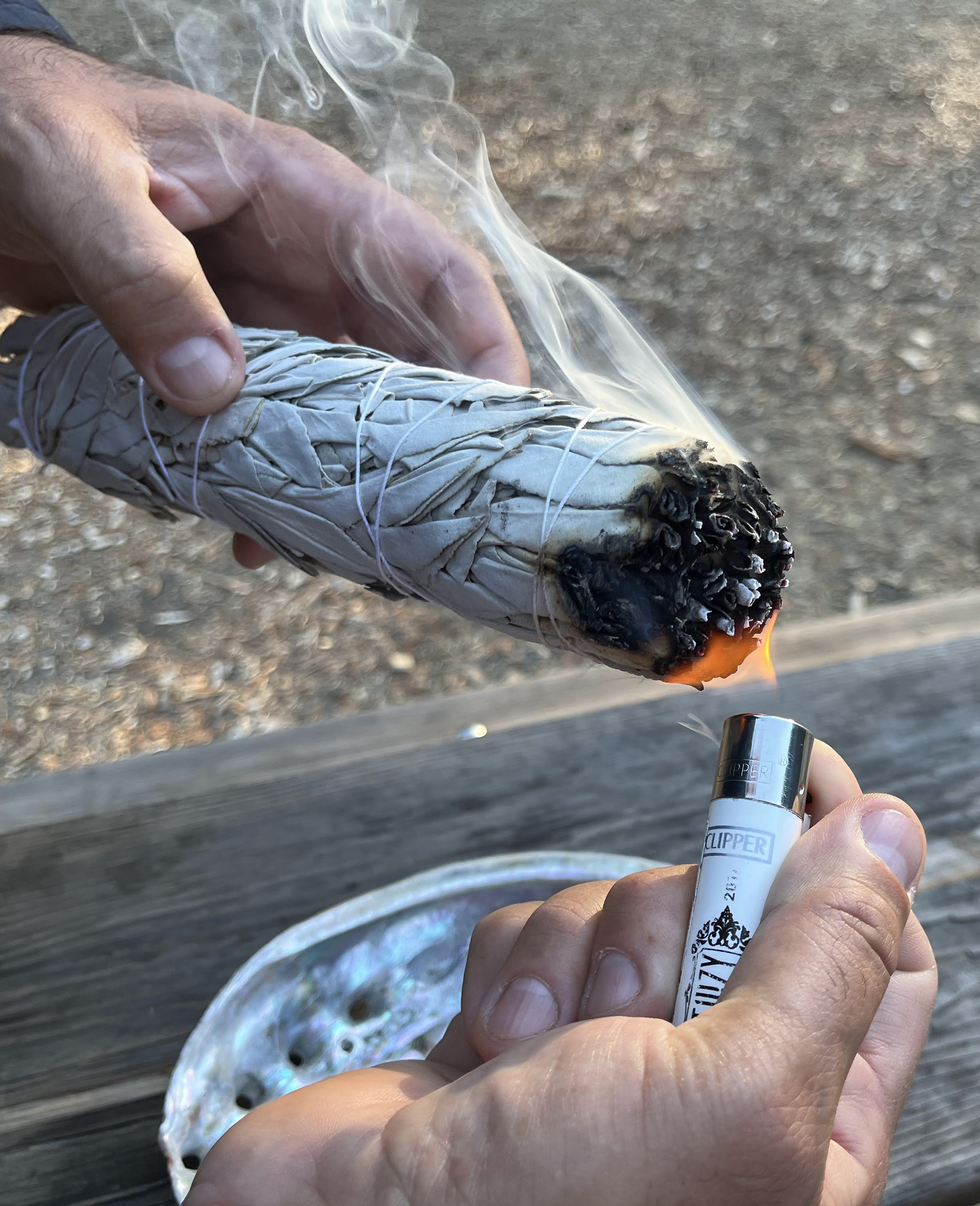
Tony Alvarez starts every walkabout tour by burning a bundle of sage to cleanse the city’s energy from the people on the walk before they enter the forest. He asks the forest for permission to forage and pays homage to indigenous ancestors who were original stewards of the land.
KIMIA AKBARI / NEXTGENRADIO
Alvarez, born and raised in the South Bay of the San Francisco Bay Area, has an undying affection for the area’s landscape and natural life. During the week, Alvarez works for a small dispensary, but on weekends, he leads community members on early morning quests for mushrooms in areas across the West Coast. Foraging the terrain ties him to California despite rapid environmental changes plaguing the state. His affinity for foraging started at a young age when he would find himself wandering outside, fascinated by the natural life.
Within a short walk at Tilden Regional Park, Alvarez has already found several things to forage, namely madrone berries, bay leaves and some turkey tail mushrooms. But finding mushrooms isn’t always as easy, especially with inconsistent weather patterns resulting from climate change. In his seven years of leading community foraging hikes around the Bay Area, Tony has come face-to-face with the impact of climate change on the California landscape, which he says has thrown forest ecology into “a tailspin.”
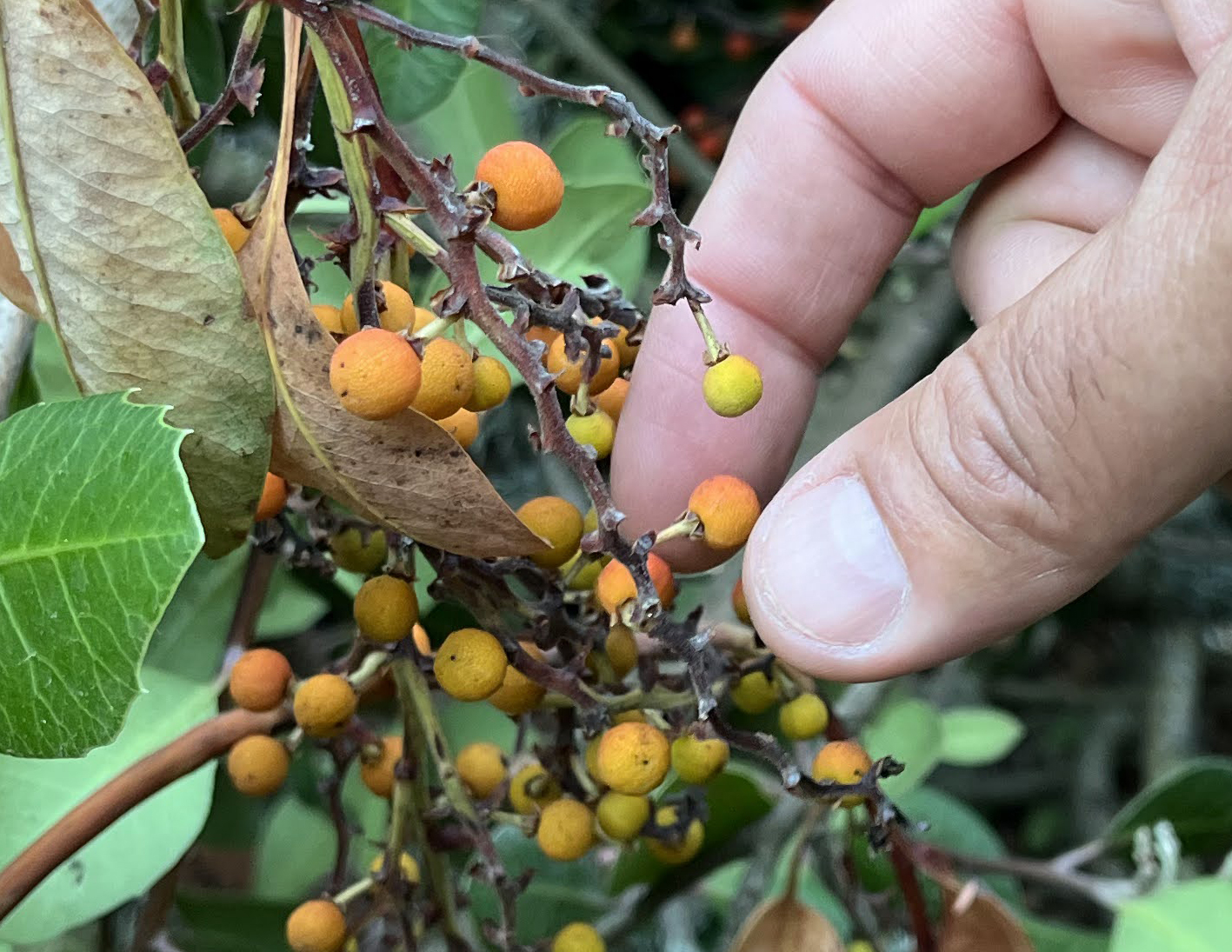
Tony Alvarez, a Bay Area based forager and leader of Shroomy Walkabouts, picks madrone berries off a Madrone tree branch on Oct. 10, at Tilden Regional Park in Orinda, California, where he often goes foraging for edible herbs. Alvarez says he often uses these berries to make punch.
KIMIA AKBARI / NEXTGENRADIO
“Areas that were moist for six months out of the year, — were maybe getting three months [now],” he said. “It’s very sporadic … It’s like a day or two here and then just a month of nothing.”
As the fog and moisture in the air dwindles throughout the years, Alvarez has had to leave the Bay Area and venture north to have access to the same amount of mycological bounty previously available in California about four to five years ago.
“You can either cultivate different strains of mushrooms that are edible or you can find areas that are more moist, which is what I do,” he said. “I go up north to Humboldt County, Arcata, Northern California, Oregon and even Washington.”
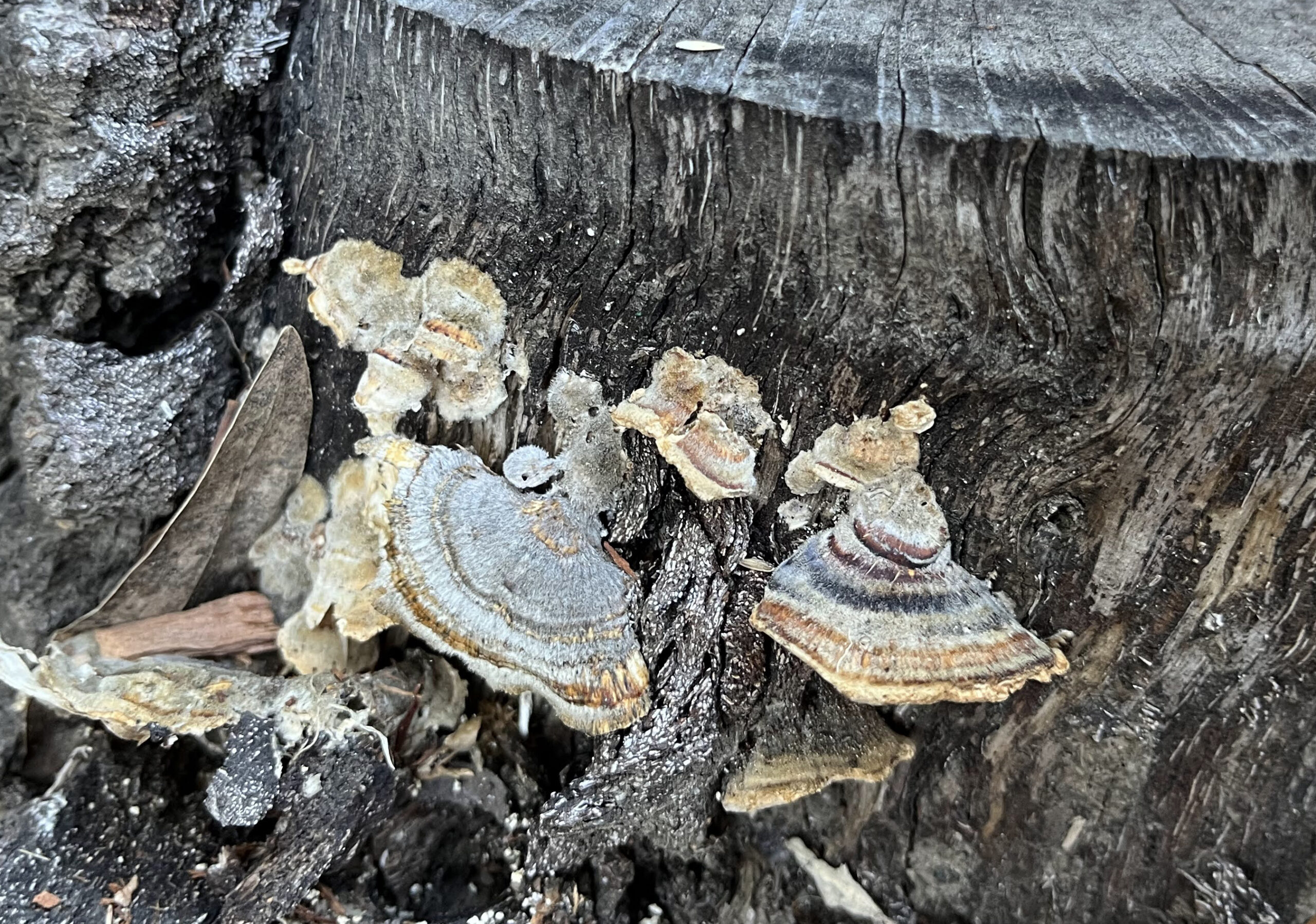
Turkey tail mushrooms grow on a tree stump at Tilden Regional Park in Orinda, California. Alvarez says Turkey Tail can be boiled and ground, to be used as a tea or added to coffee for health benefits.
KIMIA AKBARI / NEXTGENRADIO
Alvarez has seen California fires impact mushroom growth. The ash provides nutrients for the mycelial mat to grow mushrooms, their fruiting body. While he’s seen “super blooms” of specific mushrooms growing after the fires, he also says they are rare occasions.
“As far as expecting that to be a reoccurring thing … that’s just not happening because of … the water factor,” Alvarez said.
Journeying into foraging allows Alvarez to learn more about ways to take care of the land.
About twelve years ago, Alvarez participated in a two-day mycology class that changed the course of his life.
After it, he said he “just locked in.”
“I went and I learned every single thing I could learn about the mycology world, about the ecology, about the mycorrhizal connections between trees and certain mushrooms, and … it’s been onward ever since,” Alvarez said.
As his passion for foraging grew, so did his knowledge of the local natural life. He began taking friends and family on weekend hiking trips, sharing tips about foraging edible and medicinal plants. With the encouragement of his community, Alvarez began publicly leading foraging walkabouts.
“There is food all around us,” Alvarez said.
Although a free bay leaf foraged off a tree is much more fragrant compared to store-bought, that’s just a bonus. To him, foraging is a lifelong philosophy, and it’s the process of mindfully foraging that’s healing— “always ask the land for permission before taking, and never take more than you need,” he said.
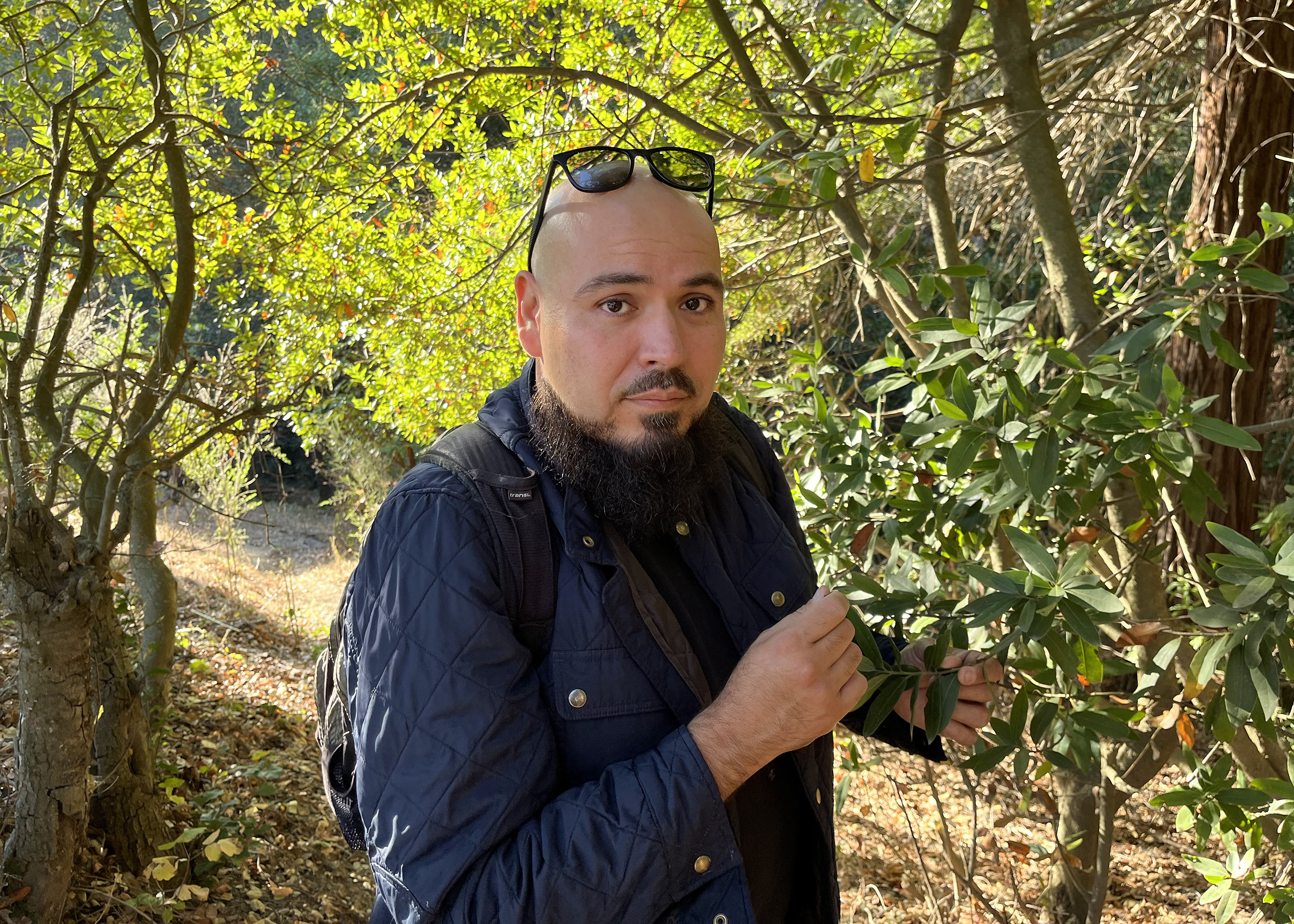
Tony Alvarez stands next to a Bay Tree at Tilden Regional Park in Orinda, California on Oct. 10. He is a a Bay Area based forager and leader of Shroomy Walkabouts. Alvarez says Bay leaf is an excellent source of antioxidants, vitamins, and other essential minerals. It can improve your immune system.
KIMIA AKBARI / NEXTGENRADIO
One way Alvarez seeks to heal the drastic effects of climate change on forests is through education about land stewardship. On group hikes, he encourages people to bring two bags — one for mushrooms and one for picking up any trash they come across.
He says it’s about “doing our part to clean up and then always implementing that love for the forest.”
“Asking first, not just taking,” he says. “We don’t own it. We’re here for a limited time. We walk in, we enjoy it, and we leave it better than when we came in.”
Building a relationship with nature is a devotional practice for Alvarez, who seeks a deep connection with Indigenous practices of land management, which have been historically undercut by forced displacement and racialized legal barriers, including anti-foraging laws.
However, in recent years, U.S. Forest Service has formed partnerships with Indigenous tribes in Northern California to help with land and wildfire management, an acknowledgment of the value of Indigenous knowledge.
“Foraging is an opportunity for people to, person-by-person, understand land management,” Alvarez says, “and understand what it takes to create and to maintain a hospitable environment in the forest.”

Tony Alvarez shows a foraged mushroom to a participant on one of his “Shroomy Walkabouts” at Tilden Regional Park on Jan. 25. Tour participants contact Alvarez through his instagram @Shroomywalkabouts to participate in his weekend foraging hikes. He chooses different areas on the west coast to explore with groups and provides handouts to help them identify the plants and mushrooms they come across.
PHOTO COURTESY OF TONY ALVAREZ